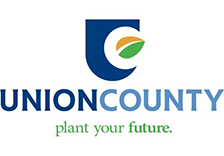Increasing Food Accessibility: Union County Takes Action
go.ncsu.edu/readext?945829
en Español / em Português
El inglés es el idioma de control de esta página. En la medida en que haya algún conflicto entre la traducción al inglés y la traducción, el inglés prevalece.
Al hacer clic en el enlace de traducción se activa un servicio de traducción gratuito para convertir la página al español. Al igual que con cualquier traducción por Internet, la conversión no es sensible al contexto y puede que no traduzca el texto en su significado original. NC State Extension no garantiza la exactitud del texto traducido. Por favor, tenga en cuenta que algunas aplicaciones y/o servicios pueden no funcionar como se espera cuando se traducen.
Português
Inglês é o idioma de controle desta página. Na medida que haja algum conflito entre o texto original em Inglês e a tradução, o Inglês prevalece.
Ao clicar no link de tradução, um serviço gratuito de tradução será ativado para converter a página para o Português. Como em qualquer tradução pela internet, a conversão não é sensivel ao contexto e pode não ocorrer a tradução para o significado orginal. O serviço de Extensão da Carolina do Norte (NC State Extension) não garante a exatidão do texto traduzido. Por favor, observe que algumas funções ou serviços podem não funcionar como esperado após a tradução.
English
English is the controlling language of this page. To the extent there is any conflict between the English text and the translation, English controls.
Clicking on the translation link activates a free translation service to convert the page to Spanish. As with any Internet translation, the conversion is not context-sensitive and may not translate the text to its original meaning. NC State Extension does not guarantee the accuracy of the translated text. Please note that some applications and/or services may not function as expected when translated.
Collapse ▲North Carolina has the 8th highest rate of food insecurity in the nation. Recent statistics indicate that children have even higher rates of food insecurity in our state. Almost 1 in 5 of North Carolina’s children do not have consistent access to enough healthy and nutritious food.
Collaborations developing community-based innovations to help residents access healthy food are making a difference across North Carolina. Higher education has heavily invested in many of these efforts. Union County is one notable example of the role played by higher education institutions in community partnerships.
Farmland covers about 46% of Union County, yet 11% of the population does not have reliable access to affordable and nutritious food. Wingate Community Garden at Wingate University is one of several teaching community gardens designed to teach the public how to grow their own produce. The N.C. Cooperative Extension, Union County Center, a joint effort of NC State University and North Carolina A&T, is also researching various plants and using them as an educational tool for young people and the larger community. Wingate University and the Cooperative Extension Office are among county leaders working on developing The Barn, a food-focused industrial park near Wingate University that will include a shared commercial kitchen, food processing equipment, and shipping capabilities. The Barn aims to connect producers and consumers by cutting out the expensive middlemen in production and shipping. Wingate University is also starting a concentration within its biology major that focuses on agriculture and food systems to help fill the estimated 50,000 job openings in the industry at any given time. The program will cover holistic agriculture from production to logistical movement, cold storage, marketing, health, wellness, and nutrition.
As noted above, several initiatives aimed at improving the food supply systems in Union County have recently been launched. These initiatives aim to address food insecurity, encourage people to grow their own produce, educate the youth and community on agriculture, and fill job openings in the agriculture industry. Local leaders are working collaboratively to create a sustainable food system that benefits both the growers’ economics and consumers’ health. The partnerships around food access in local communities are creating templates for other communities to improve their food supply systems, enhance health outcomes, and boost their local economy.
Click here to read the full article by Charlie Chapman.




